Causes of Infant Brain Injuries
Of all types of newborn traumatic injuries, brain damage is the most likely to cause permanent disability or death. According to the CDC, an estimated 475,000 children aged 0-14-years old in the United States sustain brain injuries annually. Nearly 90% return home with mild injuries, 7.8% are hospitalized, and over 2.2% die from said injuries.
Home > Infant Brain Damage > Causes of Infant Brain Injuries
- Last Updated Date: March 24, 2025
While infant brain damage can result from unforeseen accidents, preventable incidents or medical negligence typically causes most cases.
Newborn brain damage can result from a traumatic or acquired injury. A traumatic injury happens when an external physical force strikes or puts pressure on the baby’s head. For example, in birthing cases where:
- The baby’s head gets stuck in the birth canal
- The doctor uses forceps and birth-assistance tools with too much force on the infant’s head
An acquired brain injury, by contrast, occurs when the source of the brain injury is inside the brain or skull.
Oxygen Deprivation
Oxygen deprivation, also known as birth asphyxia, occurs in approximately 2-10 of every 1,000 live births. Premature babies are at an even higher risk of oxygen deprivation and its associated effects.
If a newborn becomes deprived of oxygen, physicians only have a small window of time to treat the problem. Even a few minutes of oxygen deprivation during birth can cause significant brain damage, leading to lifelong problems like autism, cerebral palsy, impaired vision, and other disorders.
Brain damage caused by birth asphyxia can either be:
- Anoxia: a case of total lack of oxygen
- Hypoxia: when the baby gets deprived of a significant amount of oxygen
While hypoxia can only cause mild to moderate brain damage, anoxia leads to severe brain injuries. In extreme cases, it can cause complete organ failure or death. Both hypoxia and anoxia can cause cerebral palsy and other disorders. When the baby’s brain doesn’t have oxygen or blood, the condition is known as hypoxic-ischemic injury.
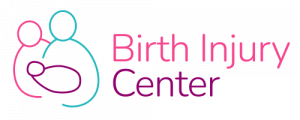
Common Causes of Oxygen Deprivation at Birth
Umbilical cord problems
A twisted, knotted, short, or prolapsed umbilical cord can cut off a baby's oxygen supply. If the cord gets wrapped around the baby’s neck, a doctor has a short time to unwrap it before deprivation occurs.
Birth canal problems
If a baby gets stuck in the birth canal and medical intervention is delayed, they can experience oxygen deprivation. When labor is complicated or prolonged, the supply of oxygen-rich blood to the brain can diminish substantially.
Uterine rupture
A ruptured uterus can cause a pregnant woman to lose high amounts of blood, consequently reducing the flow of oxygen-rich blood to the baby.
Oligohydramnios
This is a complication of pregnancy in which amniotic fluid levels are low. It increases the risk of umbilical cord compression, and associated interruption in the baby’s oxygen supply. It can also cause the infant to inhale a mixture of meconium and amniotic fluid into the lungs, further worsening oxygenation problems and respiratory distress.
Anesthesia mistakes
Any errors in anesthesia administration can cause a hypotensive crisis and blood pressure problems to the mother. If the mom's blood pressure is too low, there's a decrease in the amount of oxygen-rich blood circulating to the baby.
Blocked airways
If the mucus is lodged in a baby's lungs or constricts their airways, they can suffer birth asphyxia.
Placental abruption
If the placenta and the uterus separate too early, the baby may experience oxygen deprivation.
Preeclampsia and eclampsia
High blood pressure reduces blood flow to the baby in several ways. First, high blood pressure can constrict or damage blood vessels in the placenta. Also, it possibly increases the risk of placental abruption. A high BP also predisposes the infant to hypoxia during labor contractions.
Premature rupture of the membranes (PROM)
If the water breaks before the mother go into labor, it can cause umbilical cord compression and prolapse. It can also result in premature birth, further causing oxygen deprivation as the infant's lungs have not fully developed. PROM also raises the risk of infections, which can cause sepsis with permanent infant brain damage.
Maternal Infections
Certain bacteria and viruses can be dangerous to a baby if they become infected. If the mother is infected with these agents, then the baby may be at risk, particularly during delivery. The risk can be greatly reduced by:
- Administering antibiotics
- Ensuring that vaginal delivery doesn’t take an excessively long time
- Performing a C-section when indicated
In some cases, babies need to be tested and treated for certain infections after birth, before these become serious enough to cause permanent brain damage.
Some common infectious agents that can be dangerous to infants in utero or during birth include:
- Herpes simplex virus (HSV)
- Rubella
- Cytomegalovirus
- Varicella (chickenpox)
- Group B streptococcus (GBS)
Some of these infections can also cause premature birth, increasing the risk of brain damage and consequences such as cerebral palsy.
Physical Trauma
Physical trauma during labor and delivery can cause brain damage.
Examples include:
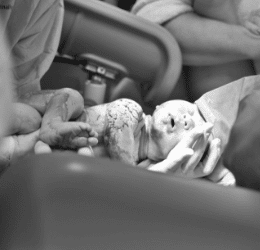
Excessive pulling
If a doctor pulls the baby too hard or abnormally, several injuries may result, including brain damage.
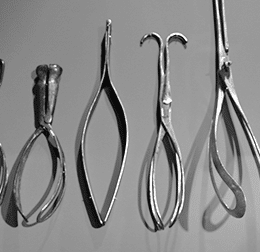
Improper use of birth-assisting devices
When forceps and vacuum extraction are used with too much force or incorrectly, brain damage and other injuries may occur.
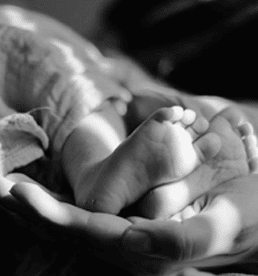
Abnormal presentations
When infants are not in the head-down presentation at the time of birth, they are at high risk of suffering brain bleeds, umbilical cord problems, and head trauma, especially if the doctor attempts vaginal delivery.

Placenta Previa
When the placenta grows very low in the uterus, it can block the cervix. If the placenta is still in this position towards the end of pregnancy, vaginal delivery is not recommended, as there is a high likelihood of severe bleeding (in both mother and baby) and consequent infant brain damage.
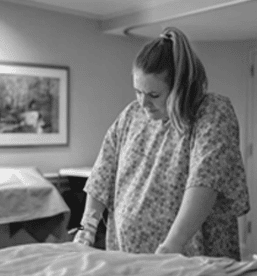
Difficulties during labor
An extended delivery period can cause brain damage, especially when the baby’s head becomes constantly pushed and knocked against the mother’s pelvic bones.
Infant Hypoglycemia
This condition happens when a baby’s glucose levels drop. Medical professionals should check a baby’s glucose levels if the baby is at high risk for hypoglycemia, or is showing signs of potentially being affected by this condition. If the glucose levels are low, prompt medical intervention is critical lest risk brain damage complications.
Infant hypoglycemia is common in:
Early Signs of Newborn Brain Damage
Depending on how much brain damage the baby sustained, the symptoms may range from mild to severe. Some babies with brain damage have serious health concerns like seizures, cerebral palsy, or developmental delays.
There are not always clear early signs of infant brain damage, especially in mild cases. Some cases are not diagnosed until months or even years later. However, some babies do show signs of brain damage soon after birth.
Common physical symptoms include:
- A large forehead
- Malformed spine
- A small skull or head
- Unusual facial features
- Stiffness in the neck
- Abnormal eye movement
A baby may also display behavioral symptoms like:
- Excessive crying
- Difficulty eating
- Difficulty sleeping
- Unusual fussiness
- And other signs of discomfort
Early symptoms of infant brain damage can also include seizures.
As a baby with brain injuries grows older, they can develop:
- Sleeping disorders
- Sensitivity to light
- Paralysis in certain body parts
- Tremors or muscle spasms
- Extreme fatigue
As the child grows even older, they may experience delayed physical and cognitive development.
Brain injury may remain asymptomatic until the child begins missing developmental or growth milestones, whether physical, emotional, cognitive, or behavioral.
Common cognitive symptoms include difficulty with:
- Communication
- Controlling impulses
- Attention and concentration
- Processing language
- Memory and processing information
Common perceptual symptoms include:
- Heightened sensitivity to pain
- Spatial disorientation
- Changes in vision or hearing
Common physical symptoms include missing key milestones, such as:
- Sitting up alone, without help
- Crawling
- Walking
- Hopping or skipping
- Running
- Feeding themselves
Treatment Options
Brain damage can cause a variety of different symptoms. In many cases, the signs of brain damage occurring at birth are not apparent until months or even years later. When they do appear, the cause of the brain damage may not immediately be clear.
In newborns who show potential signs of brain damage soon after birth, medical professionals can diagnose the condition using magnetic resonance imaging (MRI) and computed tomography (CT) scans. The goal is for doctors to recognize and treat brain injury as early as possible. Failure to promptly diagnose and treat injuries may be considered medical malpractice.
In some cases, the symptoms of infant brain damage are not specific, and diagnosis can prove difficult. It may take some time to arrive at the correct diagnosis. Treatment plans are individualized for each child, depending on their specific needs. The most common options include:
Infants suffering from brain injuries can experience head pain, seizures, and infections. As such, doctors should monitor the infant carefully to determine the type of medication that would help relieve such symptoms effectively.
Some of the medications used to treat infant brain damage include:
- Anti-seizure medications: Includes benzodiazepines and phenytoin which help control seizures and spastic movement.
- Behavioral medications: Includes methylphenidate and bromocriptine which reduces side effects such as aggression or ADHD.
- Diuretics: Includes mannitol which helps increase urination that, in turn, helps reduce fluids that may build up around the brain.
Babies with brain injuries are likely to develop cognitive, physical, and emotional disabilities. Disorders such as autism, ADD, ADHD, and learning disorders correlate with infant brain injuries.
Moreover, infants with severe brain damage can need lifelong help with physical development, including standing, sitting down, balance and coordination, making the following therapies an essential part of the life of children diagnosed with brain damage.
Physical Therapy
Physical therapists work to help children develop more physical independence. For best results, select a physical therapist who is certified as a clinical specialist and experienced in handling brain damage cases.
Typical physical therapy exercises include:
- Strength training
- Flexibility exercises
- Joint mobilization activities
- Coordination and balance exercises
- Thermal treatments or electrical stimulation
- Balance activities
Occupational Therapy
Occupational therapists usually assess your child’s problem and create a series of exercises that will help them learn the needed everyday skills. Occupational therapy helps with:
- Cognitive issues
- Emotional issues
- Feeding and swallowing
- Using the toilet unaided
- Grooming and dressing
Cooling therapy helps reduce the baby’s body temperature to stop and prevent additional brain damage. To be effective, this treatment must be administered within a few hours after birth.
During the treatment, the baby’s body temperature is lowered to about 93°F and maintained there for 72 hours. Cooling therapy has been shown to decrease the risk of long-term physical impairment and permanent brain damage in babies who have suffered certain types of brain injury during the birthing process.
Surgical interventions usually occur in cases of severe head trauma or injuries that lead to skull fractures or excessive bleeding.
Infant Brain Damage Prognosis
The prognosis for newborn brain damage depends on how severe the injury is and other health factors. If the brain injury is identified and treated promptly, babies are more likely to survive with a favorable prognosis.
While brain damage can result in autism, ADD, and other disorders, children suffering from these disabilities can lead productive lives, especially when they gain occupational and physical therapy right after the injury.
If the brain injury is severe or not treated immediately, the child may suffer serious effects, such as:
- Physical delays
- Developmental delays
- Seizures
- Cerebral palsy
These conditions can be permanent, calling for lifelong specialized care. Even so, your child may lead a happy and fulfilling life with the proper support, treatment, and therapy plan.
How to Care for a Child With Brain Damage?
Your child’s ability to cope with brain damage will vary depending on their:
- Intellect and personality
- Emotional health
- The extent of the injury
- Support from family and friends
As a parent, you can leverage your experience with the injured child to help other people understand them. For example, you can provide health professionals with insights into the child’s traits to help them formulate a more personalized treatment plan.
Here are some general guidelines for caring for a child with brain injury:
- Encourage and praise progress
- Listen and provide support
- Involve peers and community when appropriate
- Serve as a model for social behavior
- Encourage independence with supervision
- Encourage relationships with friends
- Find a therapist experienced with brain injury for you, your child, and your family
- Set small goals
- Seek support from community members
- Encourage open communication with your child, family, peers, and neighbors
- Encourage a routine and predictability as much as possible
Keep in mind that you’re not alone. There are different ways to find support or even financial assistance if needed, and that includes legal guidance if you suspect your child’s brain damage resulted from medical negligence
Potential Cost Estimate for Long-term Care
The financial cost of brain damage varies with the severity of the injury. Children with mild brain injuries will generally have significantly lower medical expenses than those who have more severe brain damage.
According to estimates, the average lifetime medical cost for a severe brain injury lies between $85,000 and $3 million. The figure can be higher when you factor in non-economic costs, such as the cost of emotional suffering, physical pain, and the effects on the overall quality of life.
Potential Cost Estimate for Long-term Care
According to CDC, hospital costs account for nearly 90% of all medical expenses relating to brain injury. These costs may include:
- Hospital recovery
- CT scans, MRI, and other tests
- Intensive care treatment
- In-patient rehabilitation
- Prescription medications
- Emergency medical care
- Surgery for skull and brain injuries
Rehabilitation Costs Related to Brain Injury
Rehabilitation treats mental and physical problems. The cost of brain damage rehabilitation can run into thousands of dollars per day. A study conducted by the Brain Injury Association of America found the average charge per day per person to be $1,600, with a complete hospital stay costing $46,000 per person.
Brain injury victims may need one or more of the following rehabilitative treatments.
- Psychiatric care
- Speech and language therapy
- Psychological care
- Physical therapy
- Occupational therapy
- Social support

Contacting Legal Representation
If your child suffered a brain injury and you believe a medical staff played a role, you may have grounds for a birth injury lawsuit or pediatric malpractice to help achieve possible financial compensation.
To prepare a medical malpractice case involving your child, you must show the following:
- The liable party (could be a nurse, doctor, or other medical faculty) owed your child a standard of care
- They failed to provide the standard of care
- As a result, your child suffered brain damage
Developing a comprehensive yet compelling birth injury claim or pediatric malpractice lawsuit can be an extensive and complex process. Contact legal representation today to have an experienced birth injury lawyer at your side.
Written by:
Birth Injury Center Team
The Birth Injury Center aims to create informational web content and guides to help women and their families seeking support and guidance for birth injuries caused by medical negligence. All of the content published across The Birth Injury Center website has been thoroughly investigated and approved by medical expert Natalie Speer, RNC-OB.




